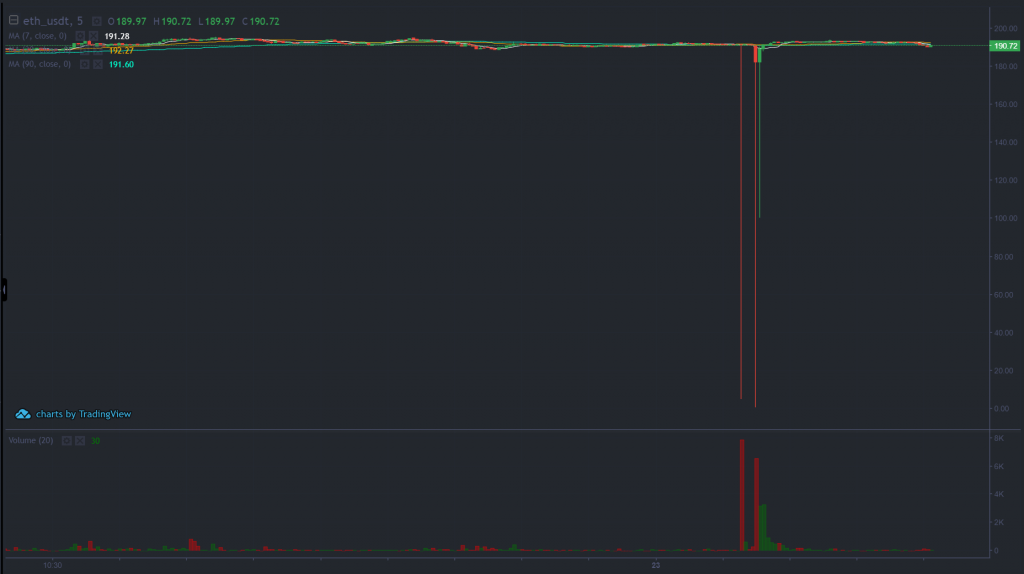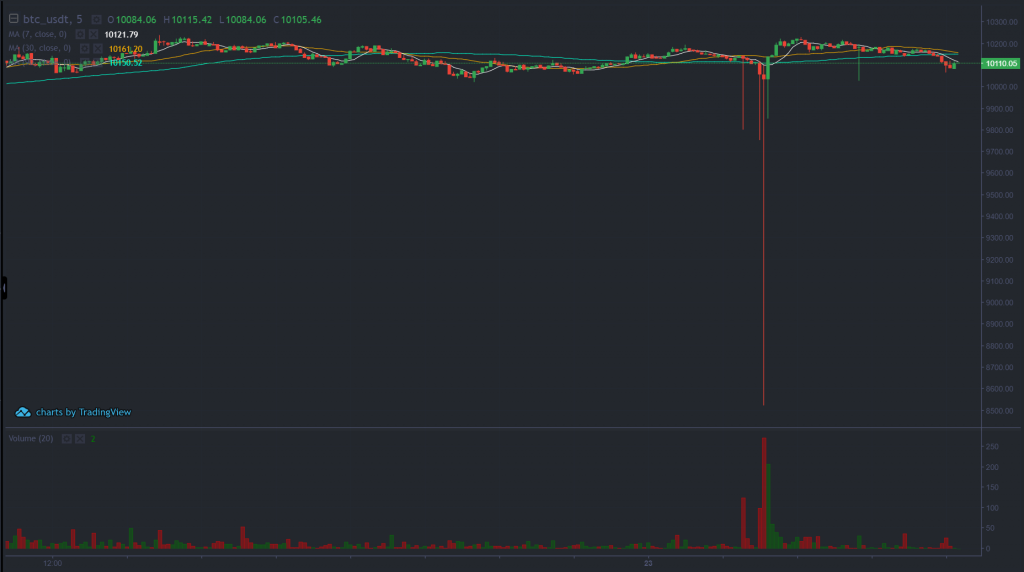Margin trading has taken the cryptoverse by storm lately, with Malta-based Binance recently introducing margin trading for a number of cryptocurrencies on its platform. A number of other exchanges have also followed its lead. However, margin trading comes with a lot of risks, and if there is not enough liquidity on the exchange, whales can get an upper hand and try to manipulate prices.
This problem was highlighted on Bitmax when the absence of error bands and natural order book liquidity led to whales allegedly manipulating the prices of top coins like Bitcoin and Ethereum. Ethereum prices fell to as low as 33 cents, while Bitcoin prices dropped to $8,500. The following chart shows the abnormal movement on BitMax, while also highlighting what low liquidity on an exchange can lead to.

Source: BitMax

Source: BitMax
Three Arrows’ Capital CEO, CIO, Su Zhu took a sly dig at the exchange and tweeted,
Lol Bitmax
Imagine margin trading on exchanges without error bands or natural order book liquidity
Waiting for the pseudo-libertarians to defend this and say “anytime you margin trade, you risk maximum loss” https://t.co/TSxGsT96aE
— Su Zhu ? (@zhusu) August 23, 2019
What led to such an unimaginable fall?
Speculations are abuzz regarding the recent debacle on BitMax, with many attributing it to be a direct result of very low liquidity which opened the gates for whales to manipulate the order books and subsequently, the prices as well. Liquidity on an exchange shows the amount of trade activity on the platform; the more the liquidity on an exchange, the better the trading activity. Thus, it would be really difficult for whales to manipulate the prices on an exchange with high liquidity.
Other reports attribute this fluctuation in prices to a recent issue with Amazon Web Services, an issue which has affected several exchanges across the globe. BitMax has suspended withdrawals from its platform, citing market fluctuation. However, a lot of questions still remain to be answered.
The post appeared first on AMBCrypto






